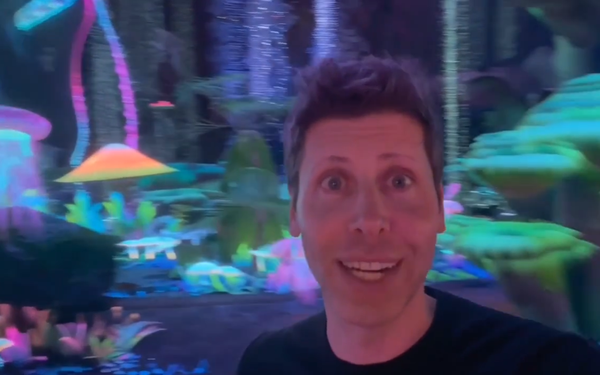
Reality got an upgrade this week with the release of
OpenAI's “Sora 2” model Cameo, and an iOS app for generating Sora 2 AI videos.
Sam Altman, OpenAI chief executive officer, used his likeness in the video to introduce Sora 2,
calling it “the most powerful imagination engine every built.” (Of course he would.)
The technology appears to have corrected the mechanics of body movement. Sora 2 now includes
sound.
And with the introduction of OpenAI “Cameo,” moviemakers can insert any real human into a scene.
In OpenAI’s video, with narration bookended by Altman, for
example, he introduces a character named Bill to describe the details of the technology.
In the Sora 2 demo, Bill was generated by AI. The video was created using Sora 2's Cameo feature, which
can insert a person's likeness into any AI-generated video.
advertisement
advertisement
This brings me to the story of Tilly Norwood, an AI-generated performer, and how general artificial intelligence (AI) is
likely to change the path of moviemaking, commercials and video across the internet.
Norwood is not an actor. The image of the woman is a character generated by a computer program trained on
the work of countless professional performers without permission or compensation, The Hollywood Reporter wrote in an article, citing SAG-AFTRA, the U.S. labor union representing
actors and other talent.
Norwood, an AI-generated actress, is the creation of Eline Van der Velden, the founder of Particle6, a U.K.-based AI production studio.
Like it or not, unless
it is stopped, this technique is likely to become the future of advertisements and movies as the industry drives toward higher performance and persuasion that involves influencing a person's beliefs,
attitudes, and behaviors through logical and emotional appeals.
Particle6 created the AI actress Norwood using its proprietary avatar personality engine. It was spun off an AI talent
studio called Xicoia to manage and monetize its digital stars, according to one report.
Xicoia’s roadmap
includes creating 40 AI personals, licensing its technology as a platform, and expanding into scripted entertainment formats, live performances and merchandising.
Regardless, there are so many
sophisticated AI platforms, but one of the most sophisticated, for certain, is Sora 2.
OpenAI creators believe that with Sora 2 the company made a jump straight to the GPT-3.5 moment for
video, because the technology can "do things that are exceptionally difficult — and in some instances outright impossible — for prior video generation models: Olympic gymnastics routines,
backflips on a paddleboard that accurately model the dynamics of buoyancy and rigidity, and triple axels while a cat holds on for dear life."
In OpenAI's instance of Bill, however, he is taken
from a real human, Bill Peebles, a research scientist on the OpenAI Sora team.